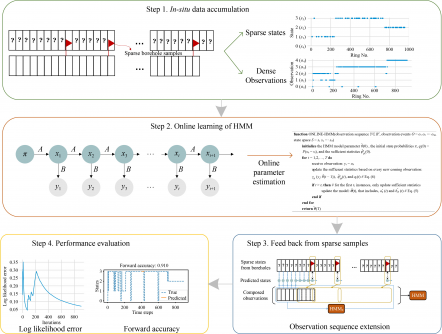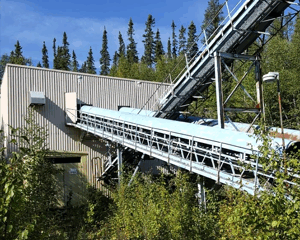Top Stories
Urgent Breakthrough in Tunnel Excavation Risk Prediction Announced

BREAKING: A groundbreaking study has just been released, revolutionizing how geological risks in tunnel excavation are predicted. Researchers from the Huazhong University of Science and Technology and Nanyang Technological University have unveiled the Online Hidden Markov Model (OHMM), a cutting-edge technology designed to enhance safety and efficiency in tunnel construction.
In the world of tunneling, accurate geological risk assessment is critical to prevent catastrophic failures such as collapses and landslides. These incidents not only pose serious safety threats but also lead to significant project delays and cost overruns, potentially impacting millions. The need for reliable predictions has never been more urgent, especially as traditional methods struggle with limitations in data collection and adaptability.
The research team has identified a major gap: conventional machine learning approaches often rely on large datasets gathered prior to construction. However, tunnel projects generate data incrementally, making it challenging to account for new geological uncertainties as excavation progresses. The newly proposed OHMM addresses this issue by integrating online learning, allowing the model to continuously update its parameters with every new data point collected during the excavation process.
The study introduces an innovative observation extension mechanism, utilizing pre-construction borehole samples to extend limited data sequences. This allows for a more comprehensive understanding of the geological conditions that lie ahead of the tunnel boring machine (TBM).
A case study conducted on a tunnel excavation project in Singapore—comprising 915 rings—demonstrated the OHMM’s exceptional predictive capabilities. When tested with just 300 observed rings, the model achieved a remarkable forward prediction accuracy of 0.968. Even with 600 observed rings, it maintained an impressive accuracy of 0.902, significantly outperforming traditional models such as LSTM networks, neural networks, and support vector machines.
The OHMM also exhibited stable prediction capabilities for up to 100 rings ahead. For practical guidance in tunnel excavation, the researchers recommend a foresight distance of 30 rings, striking an optimal balance between prediction accuracy and stability.
This vital research, titled “Geological Risk Prediction Under Uncertainty in Tunnel Excavation Using Online Learning and Hidden Markov Model,” authored by Limao ZHANG, Ying WANG, Xianlei FU, Xieqing SONG, and Penghui LIN, is now available for review. It underscores the urgent need for advanced predictive technologies in the construction industry, promising to enhance safety and efficiency in future tunneling projects.
The full text of the paper can be accessed at: https://doi.org/10.1007/s42524-024-0082-1.
Stay tuned as this story develops, and share this critical advancement in tunnel excavation technology with your network!
-

 Business1 week ago
Business1 week agoIconic Sand Dollar Social Club Listed for $3 Million in Folly Beach
-

 Politics1 week ago
Politics1 week agoAfghan Refugee Detained by ICE After Asylum Hearing in New York
-

 Health1 week ago
Health1 week agoPeptilogics Secures $78 Million to Combat Prosthetic Joint Infections
-

 Science1 week ago
Science1 week agoResearchers Achieve Fastest Genome Sequencing in Under Four Hours
-

 Lifestyle1 week ago
Lifestyle1 week agoJump for Good: San Clemente Pier Fundraiser Allows Legal Leaps
-

 Health1 week ago
Health1 week agoResearcher Uncovers Zika Virus Pathway to Placenta Using Nanotubes
-

 World1 week ago
World1 week agoUS Passport Ranks Drop Out of Top 10 for First Time Ever
-

 Entertainment1 week ago
Entertainment1 week agoJennifer Lopez Addresses A-Rod Split in Candid Interview
-

 World1 week ago
World1 week agoRegional Pilots’ Salaries Surge to Six Figures in 2025
-

 Science1 week ago
Science1 week agoMars Observed: Detailed Imaging Reveals Dust Avalanche Dynamics
-

 Top Stories6 days ago
Top Stories6 days agoChicago Symphony Orchestra Dazzles with Berlioz Under Mäkelä
-

 Business1 week ago
Business1 week agoMcEwen Inc. Secures Tartan Lake Gold Mine Through Acquisition









